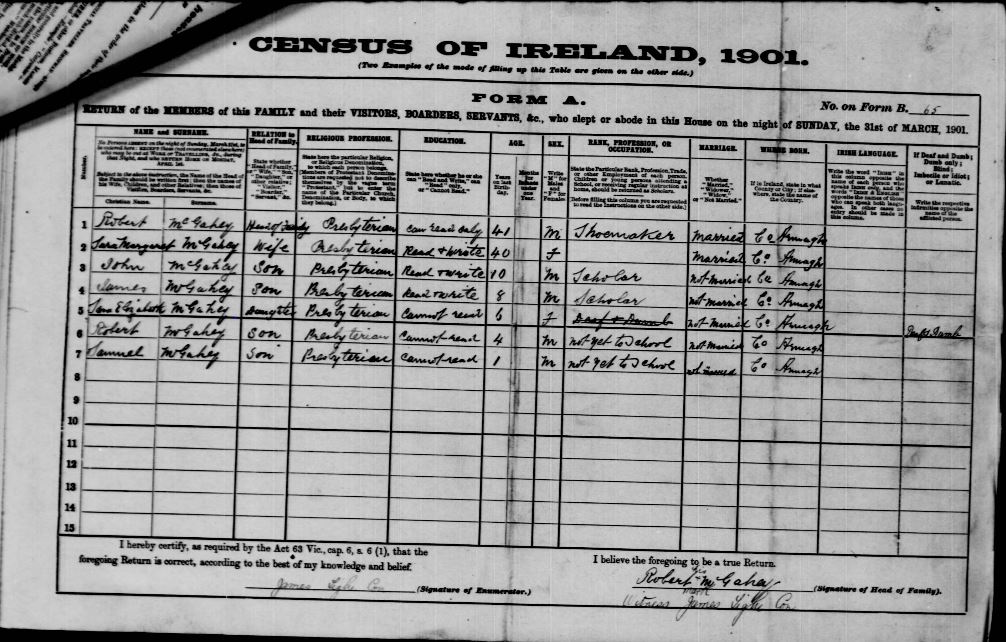by Lacey Cooke | Dec 14, 2018 | 01 What's New, Records & databases
Featured this week is a fantastic resource for anyone searching for Dutch ancestors! Open Archives recently celebrated reaching 200 million historical person entries and collaborates with dozens of libraries and genealogical societies to make them all available online in one place. Also featured this week is the Ireland 1911 Census, online access to the New York Death Index, and major new additions to records for Hampshire, England.
Featured: Dutch Records at OpenArchives
Recently, we received an email from a Genealogy Gems Podcast listener about a huge milestone achieved by the Open Archives website. This free site is home to the largest collection of references to persons in Dutch historical records, and they just reached 200 million historical person entries! If you are researching your ancestors in the Netherlands, this is a one-stop-shop to access the records you need, since Open Archives currently offers data from 86 organizations.
From the press release: “…dive into records of the civil registry, baptism, marriage and burial registers, notarial deeds, militia registers and personnel administrations. Prayer cards, family messages and funeral cards are also very useful for genealogical research. Archive institutions and also local history and genealogical societies manage these sources, which are increasingly being made available in digital form. Open Archives has made the person entries in these sources searchable in one place.”
Ireland 1911 Census
Following the recent addition of the 1901 Census, FamilySearch has now made available the Ireland 1911 Census. This new collection is comprised of over 4 million indexed records. Search for your Irish ancestors and this collection might reveal their name, age, occupation, relationship to the head of household, marital status, education/literacy, religion, birth country, and other information. The index is free on FamilySearch and was created by the National Archives of Ireland.
New York Death Index
At MyHeritage, you can now browse 4.7 million records in the New York State Death Index, 1880-1956. You’ll find information on place and date of death, gender, age at death and the State file number. The images in this collection have been obtained through the outstanding work and efforts of Reclaim the Records. Due to the poor original documents these images are low-quality. For deaths referenced in this index copies of original death certificates can be obtained from the New York State Department of Health for a fee.
Hampshire, England Records
British genealogy giant Findmypast has over 2 million new records now available to search online, with the majority relating to Portsmouth in Hampshire, England. These unique collections come from a wide variety of resources beyond standard vital records and could shed valuable light on your ancestors’ lives.
- Hampshire, Portsmouth, Portsea Island Rate Books: Over a million pages of poor rate books from as early as 1700 through to 1921. The books recorded the amount of rates paid at each property, ownership of the property, and its location in the parishes of Portsea and Portsmouth. With each record, you will find a transcript of the vital facts and an image of the original rate poor.
- Hampshire, Portsmouth Hospital Records: Assorted hospital records and medical journals from St James Hospital between 1878 and 1918. At that time, the hospital was known as the Portsmouth Lunatic Asylum. Includes civil registers, deaths, indexes to admissions and discharges, maintenance ledgers, patient notes, registers of discharge and transfers.
- Hampshire, Portsmouth Police Staff Records, 1908-1924: The Portsmouth Police Service was formed in January 1836 and the city had its own police force until 1967. The city’s fire brigade was also a branch of the police force when it was first formed. Review this collection for years of service, birthplace, physical descriptions, photograph portraits, and more.
- Hampshire, Portsmouth Quarter Sessions Browse: Thousands of criminal records from court Quarter Sessions. The browse search allows you to search each Session register from beginning to end. As well as the accused’s age, aliases and home parish, the records will provide you with a wide variety of details relating to their offense, trail and sentencing.
- Hampshire, Portsmouth Burials: Over 129,000 additional Portsmouth parish records. The new additions cover Portsea, Highland Road and Kingston cemeteries between the years 1831 and 1902. Transcripts will reveal a combination of the deceased’s birth year, death year, age at death, burial date, burial location, denomination, occupation, residence and relatives names.
Discover your British and Irish ancestors at Findmypast
Findmypast ranks as one of the Genealogy Giants: one of the world’s biggest and best genealogy websites. It’s a must-use site for tracing your roots in England, Scotland, Ireland and Wales. Findmypast also offers unique resources for finding your family history in the United States, Canada, and Australia. And their expansive archive of newspapers, Catholic Heritage Archive, and access to the Periodical Source Index mean that Findmypast is well worth a visit. Explore now with a free 14-day trial!
Lacey has been working with Genealogy Gems since the company’s inception in 2007. Now, as the full-time manager of Genealogy Gems, she creates the free weekly newsletter, writes blogs, coordinates live events, and collaborates on new product development. No stranger to working with dead people, Lacey holds a degree in Forensic Anthropology, and is passionate about criminal justice and investigative techniques. She is the proud dog mom of Renly the corgi.
Disclosure: This article contains affiliate links and Genealogy Gems will be compensated if you make a purchase after clicking on these links (at no additional cost to you). Thank you for supporting Genealogy Gems!
by | Mar 4, 2016 | 01 What's New, Ancestry, British, Church, Irish, Records & databases, United States
 Here’s our weekly roundup of new genealogy records online. Do you see any that may pertain to your ancestors?
Here’s our weekly roundup of new genealogy records online. Do you see any that may pertain to your ancestors?
ALABAMA CIVIL APPOINTMENTS. A new database of civil servants appointed in Alabama (1818-1939) is now searchable at Ancestry.com. You’ll find name, county, precinct, office held, date of appointment/commission/election and the source in the browsable images of the original card file collection.
ENGLAND (DEVON) CHURCH RECORDS. FamilySearch has published a new collection of nearly 100,000 digital images and a quarter million indexed names from bishop’s transcripts (1558-1887) for Devon (also known as Devonshire), England. The records include baptisms, marriages and burials. According to FamilySearch, “Bishop’s transcripts are copies of parish registers that were sent to the bishops every month. They are extremely valuable when parish records have been damaged or destroyed.”
IRISH STATISTICAL SURVEYS. Findmypast has published a fascinating collection of statistical surveys by the Royal Dublin Society. According to Findmypast, “The Society began to conduct such surveys in at the start of the 1800s with the aim of accurately portraying the realities of life in each county, particularly concerning its history, agricultural practices, politics, customs, and religion. The reports represented the first serious effort to capture and present such data;…they offer solid and consistent information.” Data are available for 10 counties. Click here for more detailed information on exploring these surveys. A new related collection is statistical reports pertaining to Irish censuses since the mid-1800s, also at Findmypast.
KENTUCKY WILLS/PROBATE. Ancestry.com has updated its collection of Kentucky wills and probate records, which spans more than 200 years (1774-1989). Several different kinds of estate-related documents may be included in this collection.
 Looking for other new genealogy records online? Click here to see our recent blog posts with MORE great records online.
Looking for other new genealogy records online? Click here to see our recent blog posts with MORE great records online.
by Lisa Cooke | Jan 29, 2016 | 01 What's New, Records & databases
Here’s our weekly update of new genealogy records online, designed for you to scan them quickly and click to the ones that matter for your family history. Thumbs up for free access to the Irish censuses of 1901 and 1911!
ENGLAND MARRIAGES. An enormous collection of about 2.3 million names from over 1,500 parishes across 29 English counties is in Findmypast’s new database, England, Phillimore Marriage Registers, 1531-1913
IRELAND CENSUS. MyHeritage.com has posted over 8.7 million indexed records (with images) from the 1901 and 1911 Irish censuses to its UK and Ireland Census Collection. These collections are FREE to search. According to the collection description, “The 1901 census lists – for every member of the household – name, age, gender, relationship to the head of the household, religion, occupation, marital status, county of birth (except for foreign births, which give country only), whether the individual spoke Irish (Gaelic), and whether the individual could read or write.” The 1911 census adds the numbers of years a woman had been married to her current husband; children born to them and children living.
KANSAS CENSUS. Ancestry.com has updated its Kansas, City and County Census Records, 1919-1961 . “This collection contains various city and county census records and population schedules from Kansas. They include information about inhabitants of a town, enumeration of livestock, and agriculture. Prior to 1953 the population schedules list the address, name of the head of household, and the number of individuals living in the household. Beginning in 1953 the schedules list all the members of the household and their ages.”
. “This collection contains various city and county census records and population schedules from Kansas. They include information about inhabitants of a town, enumeration of livestock, and agriculture. Prior to 1953 the population schedules list the address, name of the head of household, and the number of individuals living in the household. Beginning in 1953 the schedules list all the members of the household and their ages.”
MISSOURI CHURCH. Ancestry.com subscribers can now search Missouri, Methodist Church Records, 1856-1970 a new database of indexed images from various United Methodist churches in Missouri. Baptisms, marriages, memberships, burials and lists of clergy are included.
a new database of indexed images from various United Methodist churches in Missouri. Baptisms, marriages, memberships, burials and lists of clergy are included.
SCOTLAND. A new collection of Scottish parish and other records is now searchable at Findmypast. Scotland Registers & Records dates back to the early 1600s. Record types “range from monumental inscriptions to a novel on rural life in 18th century Scotland.”
 Looking for ancestors online? Turn to Genealogy Gems for ongoing education in using Google for genealogy (and everything else). Sign up for our FREE weekly e-mail newsletter for a free Google e-book and ongoing tips from our blog. Consider becoming a Genealogy Gems Premium website member so you get unlimited annual access to on-demand videos like Google Search Strategies for the Family Historian and many others.
Looking for ancestors online? Turn to Genealogy Gems for ongoing education in using Google for genealogy (and everything else). Sign up for our FREE weekly e-mail newsletter for a free Google e-book and ongoing tips from our blog. Consider becoming a Genealogy Gems Premium website member so you get unlimited annual access to on-demand videos like Google Search Strategies for the Family Historian and many others.
by Lisa Cooke | Jan 29, 2015 | 01 What's New, Census, Findmypast, Irish, Records & databases
 Have you ever heard of the “Irish Reproductive Relief Fund?” That name made me wonder what it was all about (and I was totally wrong). It was actually a program ahead of its time, and its records can help you trace your hard-working, poverty-stricken Irish ancestors. The records are now online for the first time at Findmypast, along with a new, easier-to-search version of the 1911 Ireland census.
Have you ever heard of the “Irish Reproductive Relief Fund?” That name made me wonder what it was all about (and I was totally wrong). It was actually a program ahead of its time, and its records can help you trace your hard-working, poverty-stricken Irish ancestors. The records are now online for the first time at Findmypast, along with a new, easier-to-search version of the 1911 Ireland census.
“The Irish Reproductive Loan Fund was a privately funded micro credit scheme set up in 1824 to provide small loans to the ‘industrious poor’ – those most affected by poverty and famine,” says a press release from Findmypast.
“This collection of almost 700,000 records, which span the period of the Irish Potato Famine, provides unique insight into the lives of those living in Ireland during one of the darkest periods in its history. The handwritten ledgers and account books reveal the changing fortunes of Irish ancestors and their subsequent movements in Ireland and across the world. Now anyone can go online and research individuals and families to find out more about where they lived, their financial situation, their social status and more besides.”
Brian Donovan, Head of Irish Data and Business Development for Findmypast, said, “These incredibly important records provide an exceptional insight into the lives of the poor across the west of Ireland from Sligo down to Cork. The people recorded are precisely those who were most likely to suffer the worst of the Famine or be forced to emigrate. These remarkable records allow us to chart what happened to 690,000 people like this from the 1820s to the 1850s, giving a glimpse of their often heart breaking accounts of survival and destitution, misery and starvation. We are very lucky to be able to tell their stories.”
These new records complement an expansive collection of Irish records at Findmypast, including Irish Petty Sessions, Irish Prison Registers, Irish newspapers, Irish Births 1864-1958 and over 800,000 Irish marriages dating back to 1619.. Another new online Irish record collection is the Clare Electoral Registers, which include early female voters.
 Here’s a tip for Irish genealogy researchers from Findmypast: “The Ireland Census 1911 is an excellent starting point for anyone researching their Irish ancestors. Findmypast’s powerful search will for the first time allow family historians to search for more than one family member at the same time, helping to narrow down results, and by birth year and by spelling variations of a name – all making it easier than ever to trace Irish ancestors.”
Here’s a tip for Irish genealogy researchers from Findmypast: “The Ireland Census 1911 is an excellent starting point for anyone researching their Irish ancestors. Findmypast’s powerful search will for the first time allow family historians to search for more than one family member at the same time, helping to narrow down results, and by birth year and by spelling variations of a name – all making it easier than ever to trace Irish ancestors.”
by Lisa Cooke | May 26, 2014 | 01 What's New, Census, Irish
If you have Irish roots, you may already know that Ireland’s National Archives has put its national 1901 and 1911 censuses online–and it’s FREE. Recently,

Irish census, 1901, sample image from Irish Ancestors website.
they’ve added more searchable databases and linked images. Now you can also find:
- Census Records for 1901 and 1911,
- Census survivals for 1821-51,
- Census Search forms for 1841-51,
- Tithe Applotment Books from 1823 to 1837,
- Soldiers’ Wills from 1914 to 1917, and
- the Calendars of Wills and Administrations from 1858 to 1922.
TIP: Irish census records before 1901 are disappointingly sparse. Read more about it in this article in The Irish Times, which alerted us to the new material on the National Archives site.






 Looking for ancestors online? Turn to Genealogy Gems for ongoing education in using Google for genealogy (and everything else). Sign up for our FREE weekly e-mail newsletter for a free Google e-book and ongoing tips from our blog. Consider becoming a
Looking for ancestors online? Turn to Genealogy Gems for ongoing education in using Google for genealogy (and everything else). Sign up for our FREE weekly e-mail newsletter for a free Google e-book and ongoing tips from our blog. Consider becoming a 
 Here’s a tip for Irish genealogy researchers from Findmypast: “The Ireland Census 1911 is an excellent starting point for anyone researching their Irish ancestors. Findmypast’s powerful search will for the first time allow family historians to search for more than one family member at the same time, helping to narrow down results, and by birth year and by spelling variations of a name – all making it easier than ever to trace Irish ancestors.”
Here’s a tip for Irish genealogy researchers from Findmypast: “The Ireland Census 1911 is an excellent starting point for anyone researching their Irish ancestors. Findmypast’s powerful search will for the first time allow family historians to search for more than one family member at the same time, helping to narrow down results, and by birth year and by spelling variations of a name – all making it easier than ever to trace Irish ancestors.”



